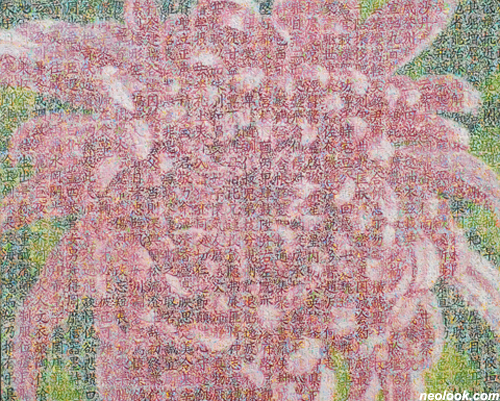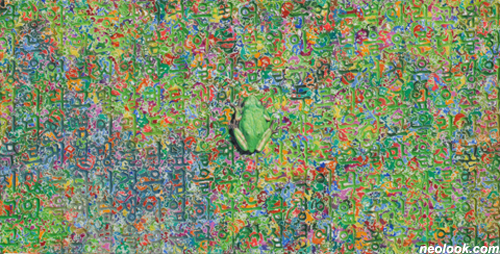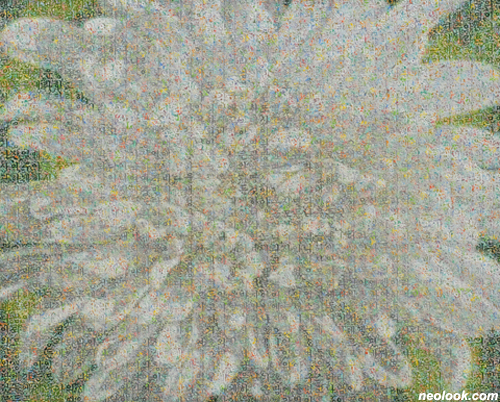- ● homepage
- ● archives
- ● restoration
- ● books
- ● big banners
- ● post board
- ■ neo's search
- ■ about us
- ■ 게재방법 안내
- 개인정보처리방침

- [email protected]
- Tel. 02_335_7922
- Fax. 02_335_7929
- 10:00am~04:30pm
- 월요일~금요일
- 3/3(월) 대체공휴일

안봉균展 / AHNBONGKYUN / 安奉均 / painting 2011_0812 ▶ 2011_0908

- 안봉균_Research on Memory_캔버스에 유채, 아크릴채색_60×30cm_2010
초대일시 / 2011_0812_금요일_05:00pm
관람시간 / 10:00am~06:00pm / 주말_10:00am~07:00pm
갤러리 이레 GALLERY JIREH 경기도 파주시 탄현면 헤이리마을길 48-12 (법흥리 1652-405번지) Tel. +82.(0)31.941.4115 www.galleryjireh.com
텍스트와 이미지, 문자와 의미와의 관계를 묻다 ● 이미지는 보는 것인가 읽는 것인가. 이미지는 시각정보다. 이미지는 단순한 시각적 대상에 머무는 것이 아니라, 그 이면에 어떤 의미(이를테면 비가시적인)를 내재한 정보 곧 의미론적인 대상이다. 헤겔은 예술을 이념의 감각적 현현이라고 했는데, 물질로 드러나 보이는 감각적 현상 내지는 형상은 결국 비물질적이고 비가시적인 이념의 자기현시를 돕기 위한 것이다. 플라톤의 암시와 상기 역시 그 의미가 크게 다르지 않다. 이로써 이미지는 보는 것이면서 동시에 읽는 것이며, 시각적 대상이면서 동시에 의미론적 대상인 것이며, 봄으로써 읽는 것이다. 이미지란 한마디로 어떤 의미를 내장하고 있는 일종의 텍스트며, 이미지 텍스트라는 말이다. 이런 이미지와 텍스트와의 상호관계성에 대한 인식은 예컨대 교회를 장식하고 있는 각종 그림과 조상들이 사실은 전혀 글을 읽거나 쓸 수 없는 문맹자들의 이해를 돕기 위한 일종의 그림책(이코노그래피)으로써 고안된 것이란 사실에서도 확인된다. 문자의 기원 역시 이러한 사실을 뒷받침하는데, 사물의 형태와 이치를 모방한 상형문자가 그렇고, 그 인식의 연장선에 놓인 소위 서화동체론(글과 그림을 하나로 보는)이 그렇다.

- 안봉균_Research on Memory_캔버스에 유채, 아크릴채색_30×60cm_2010

- 안봉균_Research on Memory_캔버스에 유채, 아크릴채색_91×117cm_2010
안봉균의 그림은 이런 이미지와 텍스트와의 상호관계성에 착안한 것이며, 이를 통해 이미지와 텍스트가 그 경계를 허물고 상호 침투되는 과정을 드러낸 것이며, 종래에는 한 몸으로 합체되는 경계를 드러내 보인다. 이를 위해 그 표면에 문자가 새겨진 오래된 비석이나 비문을 차용하고 재현하는데, 비문에 새겨진 문자는 각각 음각과 양각으로 표현된다. 이때 작품을 위해 인용되는 텍스트로는 개인사나 특정의 이데올로기를 반영하는 경우가 없지 않지만, 대개는 성경이나 문학작품 등 모두가 공유하는 보편적인 문화적 자산들이다. 작가의 작업이 어떻게 왜 쉽게 공감을 끌어내고 있는지를 엿보게 해주는 대목이다. 텍스트로 나타난 이런 보편적인 가치관은 문자 위에 덧그려진 자연 이미지에 의해, 한눈에 그 실체를 알아볼 수 있는 친근한 소재들에 의해 재차 강화된다. 말하자면 작가는 성경으로 대변되는 거대담론(이를테면 로고스)과 문학작품으로 표상된 감성적인 측면(이를테면 파토스)에 호소하는 한편으로, 인간과 자연, 문명과 자연과의 유기적인 관계와 같은 보편적인 주제의식에 천착하고 있는 것이다. ● 한편으로 작가의 경우에 작업이 제작되는 과정을 살피는 것이 특별한 의미를 가질 수 있는데, 작업의 전개양상이 단순한 회화와는 사뭇 다를 뿐만 아니라 이를 통해 표출되는 주제의식이 제작과정과 상호 긴밀하게 맞물려있기 때문이다. 그 제작과정을 보면 우선 캔버스 전면에 수차례 젯소를 발라 면을 고르게 한 연후에 겔 상태의 모델링컴파운드를 덧발라 문자를 축조한다. 이때 초소형 나이프를 이용해 마치 한 땀 한 땀 쌓아올리듯 컴파운드를 점점이 찍어 중첩시키는 과정을 거쳐 화면 가득히 문자 텍스트를 기술한다(?) 일종의 돋을새김 기법이 적용됨으로써 미미하지만 저부조에 흡사한 화면효과가 연출되는 것이다. 양각의 경우가 그렇고, 음각에서는 이 일련의 과정이 거꾸로 적용되며 특히 일종의 상감기법이 적용된다. 이렇게 화면에 문자 텍스트가 조성되고 나면 그 위에다 다양한 색상을 덧발라 올려 중첩시키는데, 이로써 적어도 표면적으론 애써 축조한 문자를 지운다(?) 그리고 재차 표면을 갈아내고 덧칠하기를 거듭 반복하는 과정을 통해서 그렇게 지워진 문자가 부분적으로 드러나게 한다. ● 보기에 따라서 본격적인 그림을 덧그리기 위한 바탕화면을 조성하는 과정처럼 보이지만, 작가의 경우에 이 과정은 사실상의 핵심적인 과정에 해당하며 그 자체가 작가의 작업이 갖는 특정성을 말해준다. 말하자면 작가의 그림은 흔히 그렇듯 그리기보다는 만들고 축조하는 과정이 더 두드러져 보이고, 그림 대신 문자를 기술한다는 점에서 보통의 회화와는 다르다. 그 자체를 회화의 확장으로 볼 수도 있겠고, 이를 통해 일종의 문자회화로 정의할 만한 새로운 형식의 가능성을 예시해준다고도 할 수 있다. 이렇게 조성된 화면은 그림으로 봐야할 지 아니면 다만 문자 그대로를 옮겨놓은 즉자적 텍스트로 봐야할 지 그 경계가 모호해진다. 나아가 이러한 모호한 경계나 그 경계에 대한 인식 자체를 이미지와 텍스트, 시각적 기호와 의미론적 기호, 그리고 보기와 읽기와의 상호작용성을 표상하는 것으로 이해할 수 있지 않을까 싶다.

- 안봉균_Research on Memory_캔버스에 유채, 아크릴채색_61×146cm_2010
작가의 작업은 말하자면 텍스트에 일종의 몸(그림과 형상)을 부여해줌으로써 읽는 텍스트를 보는 텍스트(심지어 만져지는 촉각적인 텍스트)로 전치시켜놓고 있으며, 이를 통해 기호론과 관련해서 이제는 상식이 돼버린 기표와 기의와의 상호내포적이고 상호간섭적인 관계를 다루고 있는 것이다. 그 와중에서 의미론과 관련하여 흥미로운 지점을 건드리고 있는데, 제작과정에서 엿볼 수 있듯 작가는 화면 가득히 문자를 축조하고, 그렇게 축성된 문자를 색채로 덧칠해 지우고, 그리고 재차 그 표면을 갈아내 그렇게 지워진 문자가 부분적으로 다시 드러나게 한다. 문자를 드러내고 숨기기가 교직되고 있으며, 문자의 즉자적 의미와 암시적 의미가 직조되는 일종의 의미론적 놀이를 노는 것 같은 이 일련의 작업에서 작가는 자연스레 문자와 의미와의 관계를 끌어들인다. ● 문자는 어떻게 의미를 담보하는가. 문자는 의미를 명명백백하게 드러낼 수 있는가. 문자는 의미의 집일 수가 있는가. 회의적이다. 문자는 추상의 영역에 속하고, 의미는 실제의 범주에 속한다. 의미는 필연적으로 다의적이고, 문자는 그 다의적인 다발을 속아내 의미를 한정한다. 의미가 문자로 고정되는 과정에서 일종의 배제가 작용한다는 말이다. 암시와 상기, 그리고 행간읽기와 이면읽기는 이렇듯 배제된 의미의 다발들을 역으로 추출하고 복원하는 과정에 다름 아니다. 작가의 그림에 나타난 부분적으로만 드러나 보이는, 겨우 읽을 수 있을 뿐인, 흔적으로 남은 문자는 이렇듯 불완전한 텍스트를 암시한다. 그 흔적이 배제된 의미의 다발들을 환기시킨다. 문자는 배제로 인해 불완전하고, 의미는 다의성으로 인해 불완전하다. 로고스는 언어로 축소될 수가 없고, 의미는 문자로 환원될 수가 없다. 의미가 드러나기도 하고 숨기도 하는 작가의 텍스트 작업은 문자와 의미의 이렇듯 불완전한 동거를 주지시킨다. ● 그리고 작가는 이렇게 조성된 텍스트 화면 위에 전면적으로나 부분적으로 사실적인 이미지를 그려 넣는데, 대개는 곤충과 과일, 하늘과 바다, 해와 달, 그리고 풍경 등 자연에서 채집한 모티브들이다. 자연 이미지를 그린 연후에 그 위에 덧칠하고 갈아내는 과정을 중첩시켜 그림과 텍스트가 한 몸으로 합체된 경우도 있고, 텍스트 위에 그저 그림이 얹혀져 있는 예도 있다. 이로써 화면은 한눈에도 텍스트 부분과 이미지가 구별돼 보이는데, 텍스트가 모노톤으로 그려진 것에 반해 이미지는 사실적으로 그려진다. 이로써 일종의 대비가 강조되는데, 이를테면 문자와 이미지가, 문명과 자연이 대비된다. 한편으로 텍스트와 이미지가 어우러지거나 아예 합체되는 것으로 보아 그 대비는 엄밀하게는 비교를 통한 조화라고 해야 맞다. 표면적인 비교와 대비를 통해 궁극적으론 조화 곧 자연과 인간이 어우러지는 삶의 경계를 지향하고 있는 것이다. 그리고 나아가 그 자체를 문자와 의미, 이미지와 의미와의 불완전한 동거가 봉합되고 완성되는 어떤 경계를 표상하는 것으로 읽을 수도 있지 않을까 싶다. ● 이로써 안봉균의 그림은 예술이나 미술이 종래에는 인문학의 한 형식일 수밖에 없음을 예시해주는 강력한 사례가 되고 있으며, 학제간 연구방식, 이를테면 고고학(숨겨진 의미를 발굴하고 캐낸다는 점에서)과 미술, 언어학 내지는 기호학(문자와 의미와의 상관관계를 다루고 있다는 점에서)과 미술이 만나지는 접점에 대한 가능성을 예시해준다. ■ 고충환

- 안봉균_Research on Memory_캔버스에 유채, 아크릴채색_130×162cm_2011
나의 작업은 이미지와 텍스트와의 상호관계성에 대한 연구이며 이것은 이미지와 텍스트의 경계를 무너뜨리고 상호 침투되어 종래에는 한 몸으로 합체되는 지점에 대한 실험이다. 이를 위해 광개토대왕비석의 비문처럼 문자가 새겨진 오래된 돌의 표면이나 팔만대장경 같은 목판의 피부를 차용하여 화면에 재현하는데 중점을 두었으며 이 문자들은 각각 음각과 양각으로 캔버스 위에 구축된다. 이로서 텍스트는 읽는 텍스트에서 시각적 텍스트로, 촉각적인 텍스트로 확장된다. 시각예술의 수많은 이미지들이 표현해 내는 것 못지않게 비문이나 목판에서 볼 수 있는 오랜 시간 마모되어진 채 가독성만 남아있는 문자판 이미지도 침묵의 소리와도 같은 모종의 강렬한 울림과 내러티브를 간직할 수 있다는 것을 발견하고 이것을 적극적으로 회화에 응용하여 사색적인 공간으로 재구성한다. 착색하고 갈아내고 하는 과정을 반복하여 얻어진, 드러났다가 사라졌다가 하는, 오래된 비문의 그것과 같은 텍스트이미지는 인간의 지식, 기억과 망각, 사랑과 이별, 추억 등 모든 삶들을 상징하고 있다. 작품을 위해 인용되는 텍스트로는 성경이나 문학작품 등 모두가 공유하는 보편적인 문화적 자산들이다. 이렇게 조성된 텍스트 화면 위에 전면적으로 오버랩 시키거나 부분적으로 사실적인 이미지를 그려 넣는데 자연의 메타포로서 등장하는 곤충들이나 과일 등의 이미지가 텍스트가 되고 텍스트가 다시 이미지가 된다. 이 대비를 통해 인간과 자연, 문명과 자연과의 유기적인 관계와 조화 같은 보편적인 주제를 다루고 있다. ■ 안봉균

- 안봉균_Research on Memory_캔버스에 유채, 아크릴채색_130×162cm_2011
Ask about the relations between text and image, and letters and meaning ● Is the image is to see or read. Image is visual information. Image is not mere visual subject but information with a certain meaning(ex. non-visual), that is the semantic subject. Hegel defines arts as the sensuous revelation of ideology, and the sensuous situation or phenomenon shown as the material aims to help self-revelation of immaterial and non-visual ideology. Plato's suggestion and recollection are not largely different in terms of meaning. Like this, image is to see and at the same time to read, and the visual subject and at the same time non-visual subject, as well as it is to read by looking. In short, image is a kind of text with a certain meaning, and it is the 'image text'. The perception on correlations between the image and text was examined from various pictures adorning churches and the fact that picture books(iconography) were designed to help the illiterate by ancestors. The origin of text also supports this fact, there were evidences including hieroglyphic characters that copy pattern and principle of things, and so-called Seowhadongchoi theory(paintings and writings are considered as one.) on an extension line of the perception. ● Ahn, Bong-Kyun's drawing is based on the correlations between the image and text, and through this it shows the process of breaking the boundary between image and text and interpenetrating each other. Conventionally, it shows the boundary where the two are combining as one body. For this, the artist borrows and represents the letters written on the old gravestones or inscriptions, and the letters on the inscriptions are expressed as intaglio and relief. The texts quoted for the work sometimes reflect personal matters or specific ideology, but mostly are normal cultural assets like bible or literary works everyone shares. That explains how and why the artist's work attracts sympathy easily. Such common values expressed as the text become stronger again by the familiar materials that are grasped at one sight. So to speak, the artist appeals to the grand discourse(ex. logos) representing bible and the emotional aspect presented as literary works(ex. pathos) while he searches the common thematic consciousness like the organic relation between civilization and nature. ● On the other hand, the artist has a special meaning of looking into the process of the work production because the development phase of the work is very different from mere drawing, and the expressed thematic consciousness is closely linked to the production process. Looking into the production process, first, primer is applied on the whole canvas many times to even the surface, and gel-type modeling compound is repainted for constructing letters. Then, character text is described through the process of overlapping by pointing compound as if it was accumulated with every little stitch. The canvas effect that is mere but similar to low relief is expressed by applying the embossing technique. That was relief case, and in case of intaglio a series of process is applied backward and the specific inlaying is applied. Like this, after creating character text, various colors are repainted on it for overlapping, which removes, ostensibly at least, the hard-constructed characters(?). And, through the repeated process of grinding the surface and repainting it, the erased characters are partially shown. ● It looks like the process of creating the background canvas for repainting the actual drawing from the point of view, but in fact the process signifies the essential process, which expresses the specificity the artist's work has. So to speak, the artist's painting normally distinguishes the process of making and constructing rather than drawing, and the fact that letters are described instead of paintings is different from the normal painting. It can be considered as the expansion of paintings in itself, and through this it seems to anticipate the possibility of new type that can be defined as word paintings. The boundary is ambiguous whether such the created canvas is considered as the picture or the immediate character that are literally transferred. Furthermore, it may be understood as this ambiguous boundary or the perception on the boundary in itself presents the correlations between image and text, visual symbol and semantic symbol, and looking and reading. ● The artist's work transposes from the visual text to the readable text(even the tactual text) by giving the text a body(picture and shape), and through this it deals with the mutually implicated and mutually interfered relations between signans and signatum that now become common sense regarding semiotics. Among them, regarding semantics there is an interesting point in that the artist make a full of characters on the canvas, paints the created characters in color to erase, and grinds the surface again, so the removed characters are partially shown as seen in the artist's production process. Showing and hiding of characters are mixed, and in a series of process as if playing semantic games where immediate and suggestive meaning of characters are weaved, the artist naturally attracts the relations between characters and meaning. ● How do characters cover the meaning? Can characters show the meaning manifestly? Can characters be a house of meaning? It's skeptical. Characters are subordinate to the area of the abstract, and the meaning is involved in the actual area. The meaning is necessarily polysemic, and the characters separate the polysemous occurrence to define the meaning. In the process of fixing meaning as the character, a kind of exclusion is applied. Suggestion and recollection, and reading between the lines and reading the inside are no other than the process of extracting occurrence of the excluded meaning reversely and restoring them. Characters that are partially shown in the artist's paintings and hard to read, and that remain as the marks suggest the imperfect text. The marks rouse the occurrence of excluded meaning. Characters are imperfect due to exclusion, and the meaning is imperfect due to polysemy. Logos cannot be reduced as the language, and meaning cannot be changed to characters. The artist's text work where the meaning is shown and hidden points the imperfect living of characters and meaning. ● Also, the artist draws wholly or partially the realistic image on the created text canvas, and the motives are from nature including insects and fruits, sky and sea, sun and moon, and scenery. The painting overlapped through the process of painting and grinding on it is sometimes combined with the text as one body. There is a case where the painting is just on the text. Like this, the canvas is separated from text and image parts, image is drawn really contrary to the text drawn with mono tone. Such contrast is emphasized, like characters and image, or civilian and nature. On the other hand, as the text and image are harmonized or combined, the contrast should be strictly considered as harmony through the comparison. Through surface comparison and contrast, ultimately it is the harmony that means the boundary of harmonious life of nature and human. Furthermore, it can be regarded to represent a certain boundary where imperfect living of the text and meaning, and image and meaning is combined and completed. ● Like this, Ahn, Bong-Kyun's painting is the strong case to show that arts or art cannot but be a type of humanities, and shows the possibility about the contact point where interdisciplinary approach such as archaeology(in that it finds out and digs the hidden meaning), linguistics, or semiotics(in that it deals with the correlations between the text and meaning) encounters arts. ■ Kho, Chung-Hwan
Vol.20110812e | 안봉균展 / AHNBONGKYUN / 安奉均 / painting
